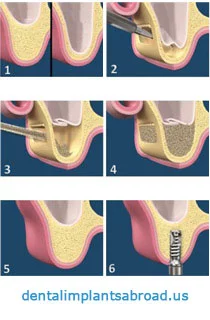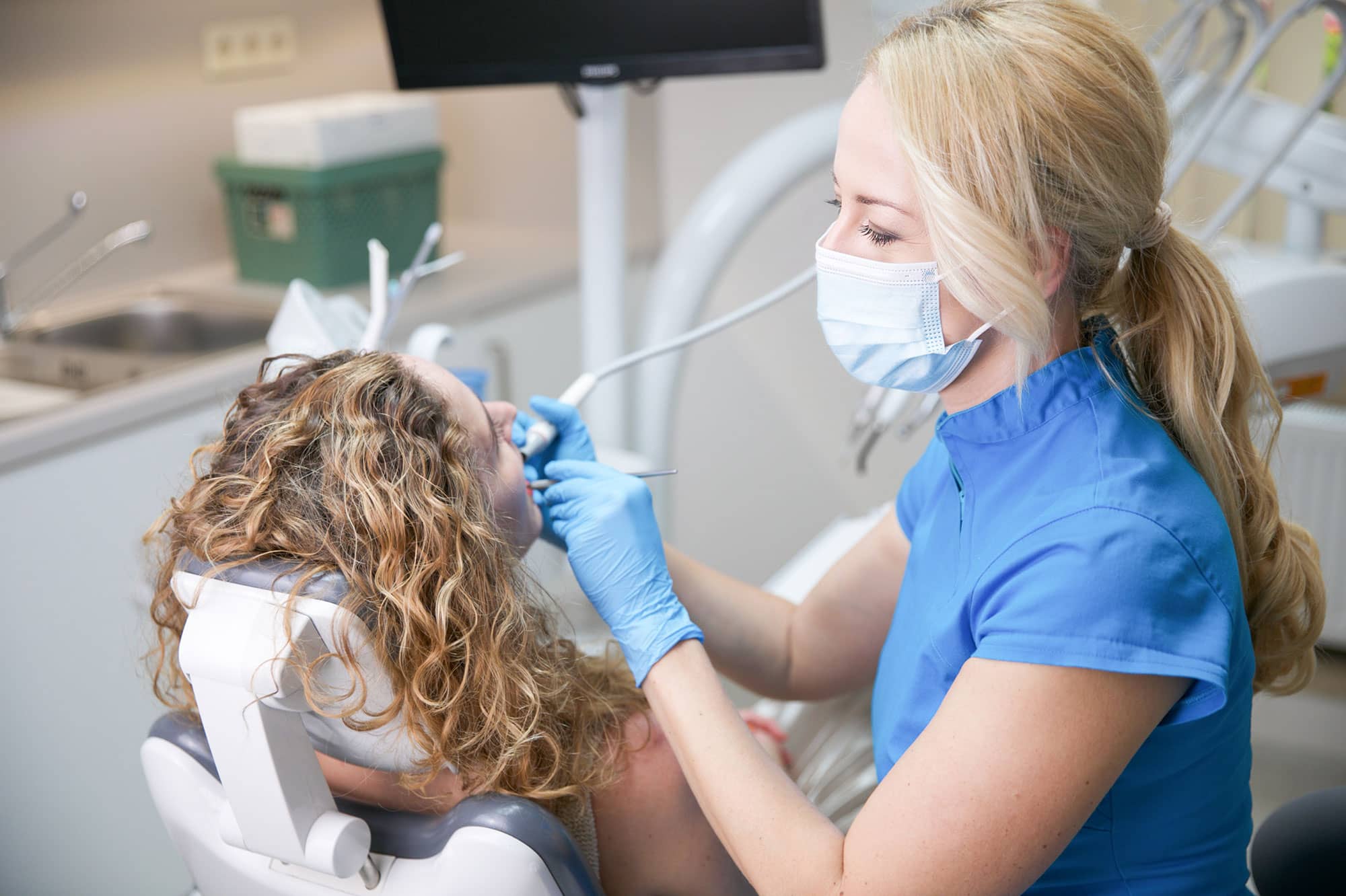A so-called sinus lift might sound quite technical at first glance, but actually there’s a relatively smart solution behind it. The sinus lift is a well-thought-out and effective method for preparing for implantation when there is insufficient bone thickness. However, every case is individual, so the choice of procedure should be a joint decision between the doctor and the patient. Placing implants doesn’t sound so complicated anymore, does it? This article is aimed at patients who are planning a dental implant in the upper jaw and want to find out when and why a sinus lift is necessary, how the procedure works, and what alternatives, risks, and healing times exist.
In this article, you will get answers to the following: 
- What is a sinus lift procedure?
- Will my face change after a sinus lift?
- How long does it take to recover from a sinus lift?
- How expensive is a sinus lift?
What is a sinus lift procedure?
A sinus lift is a surgical procedure that involves adding bone to the upper jaw in the area of the molars and premolars. The goal is to create space for a dental implant by increasing the height of the bone in the posterior maxilla (upper jaw), directly below the sinuses. The steps:
- The sinus membrane is gently lifted upward.
- Bone filler is placed in the area where the sinus used to be.
- Over time, the transplanted bone fuses with the natural bone, creating a stable base for the dental implant.
When it is needed:
- When there is not enough natural bone height due to gum disease or bone loss due to tooth loss.
- When the sinus is too close to where the implant is to be placed.
- A sinus lift is often a key step for patients who want implants in the upper back jaw, where bone density is typically lower.
How successful are sinus lifts? Are safe?
Sinus lift surgery is generally very safe and highly successful when performed by an experienced dentist. Success rate: The success rate for sinus lift surgery ranges from 85% to over 95%, depending on the patient’s health, bone quality, and post-operative care. Once healing is complete (usually 4-9 months), the bone graft is well-integrated, providing a stable foundation for dental implants. Safety: It is considered a routine and low-risk oral surgery procedure. Common side effects, such as minor swelling or bleeding, are usually short-lived. More about dental bone graft complications
How painful is a sinus lift procedure? Are you awake during it?
Sinus lift surgery is usually not very painful, especially with modern techniques and proper anaesthesia. You will not feel any pain as the area will be numbed with local anaesthesia. Sedation or general anesthesia may be used for fearful patients or in complex cases.
Is there an alternative to a sinus lift?
Yes, there are alternatives to a sinus lift, depending on the condition of the bone and the treatment goals. The main options are:
- Short or zygomatic implants: These are a special type of dental implant that is used when bone height is limited. Short implants can be placed in shallower bone without an abutment. Zygomatic implants are anchored in the cheekbone (zygoma) and are used in very advanced cases.
- Bone grafting in other areas: If there is better bone in the front of the jaw, implants can be placed there, and bridges or implant-supported dentures can replace missing back teeth.
- Angled implants (All-on-4 technique): This method places the implants at an angle to maximise the existing bone and avoid the sinus altogether. Common for full-arch restorations (replacing all the teeth in the jaw).
- Removable dentures or bridges: Non-surgical options, such as partial dentures or fixed-dentures, can replace missing teeth without bone grafting.
Will my face change after a sinus lift?
In most cases, the face does not change noticeably after a sinus lift because the sinus lift is performed on the inside of the upper jaw, below the sinus, not on the visible, outer part of the face. The increased bone volume helps support a future dental implant, but it does not dramatically change the contours of the face. Swelling after surgery is temporary and is not a permanent change in the shape of the face. In the long term, the procedure helps maintain facial symmetry by preserving bone structure.
What is the most common complication of a sinus lift?
The most common complication of a sinus lift is perforation (rupture) of the sinus membrane (also known as Schneider’s membrane). What does this mean? During a sinus lift, the membrane that lines the sinus cavity is carefully lifted to allow bone grafting to take place underneath. If this thin membrane ruptures, material or bacteria from the grafting process can enter the sinus, which can lead to complications. What happens if it ruptures? In many cases, the surgeon can repair the tear immediately using a special membrane or stitches. If the tear is large, the procedure may need to be postponed to allow healing to occur. Other, less common complications: Infection (rare with proper hygiene and antibiotics), sinusitis or sinusitis, graft failure (if the bone does not integrate properly), excessive bleeding or swelling. Read more dental bone graft complications
What should you avoid after a sinus lift?
Proper care after sinus surgery is key to healing and preventing complications. Here’s what you should avoid:
- Don’t blow your nose: Blowing your nose can damage the sinus lining and dislodge the bone graft. If you must sneeze, do so with your mouth open to relieve pressure.
- Avoid smoking: Smoking slows healing and increases the risk of infection and graft failure.
- Avoid drinking through a straw: Suction can put pressure on the sinuses and disturb the transplant site.
- Do not lift heavy weights or perform strenuous exercise: Physical exertion increases blood pressure and sinus pressure, which may cause bleeding or discomfort.
- Avoid flying and staying at high altitudes: Changes in atmospheric pressure can irritate the healing sinuses. Wait at least 1–2 weeks or as directed by your surgeon.
- Do not pick at the surgical site: Avoid brushing your teeth or touching the area with your tongue or fingers. Read more about dental bone graft aftercare
Always follow our dentist’s post-operative instructions carefully and take the prescribed medications. This will contribute to a smooth and successful recovery.
How long does it take to recover from a sinus lift?
Initial healing after a sinus lift usually takes 1-2 weeks. Full recovery – meaning the bone graft is fully integrated into the jawbone – can take 3-9 months, depending on your body and the extent of the graft.
First 1-2 weeks: Swelling, mild discomfort, and possible minor bleeding are normal. Most patients return to their normal activities within a few days.
3-9 months: The grafted bone material integrates (osseointegration) into the natural bone. Once the bone is strong enough (usually after 3-6 months), our dentist can safely place the dental implant.
How expensive is a sinus lift?
The price of a sinus lift varies depending on the type of bone material (own bone, artificial material or donor bone) and the individual treatment needs. At OUR CLINICS a sinus lift treatment is available from 500 dollar.


